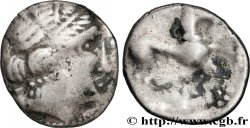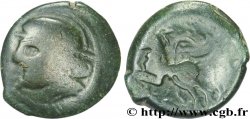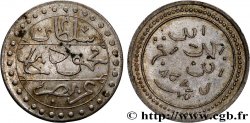E-auction 327-243487 - fjt_518887 - AUVERGNE, JETONS ET MÉDAILLES Héros populaire “Lustucru” 1660
Чтобы принять участие в торгах, вы должны войти в систему и стать подтвержденным участником аукциона. Войдите, чтобы сделать ставку. Ваш аккаунт будет подтвержден в течение 48 часов. Не ждите до закрытия торгов, чтобы зарегистрироваться.Сделав ставку на данный товар, вы вступаете в юридическое соглашение на покупку выбранного товара и нажатием кнопки «Сделать ставку» подтверждаете принятие вами условий интернет-аукционов cgb.fr.
Ставка может бить сделана только в полном эквиваленте евро. Торги закроются согласно времени, указанному в описании товара, все ставки, сделанные после закрытия торгов, учитываться не будут. Не следует откладывать предложение вашей ставки до последнего момента, так как система может не успеть обработать вашу заявку, и ваша ставка не будет принята. Более детальную информацию вы найдёте здесь: FAQ по интернет-аукционам.
БЕСПЛАТНО.
БЕСПЛАТНО.
| Оценить : | 30 € |
| Цена : | 11 € |
| Максимальная предлагаемая цена : | 12 € |
| Конец торгов : | 22 July 2019 18:00:00 |
| Участников : | 5 Участников |
Тип Héros populaire “Lustucru”
Дата: 1660
Металл: copper
Диаметр: 25,5 mm
Ориентация осей монеты: 6 h.
Вес: 4,40 g.
Век: lisse
Комментарии о состоянии
Usure régulière sur les reliefs. La dorure reste bien présente au droit
Ссылки в каталоге: :
F.9608 a - Cahiers numismatiques 139, mars 1999
Лицевая сторона
Аверс: легенда: OMN - E. FERE - NS. MALVM..
Аверс: описание: Un singe accroupi sur un âne allant à gauche. D'une des boîtes sortent trois têtes de femmes.
Аверс: перевод: (Il porte tout le mal).
Обратная сторона
Реверс: легенда: .VNICVS- . EST. - SPECIE..
Реверс: Описание: Deux forgerons redressent une tête de femme ; à l'exergue : 1660.
Реверс: перевод: (Un seul a cette apparence).
Комментарий
Cet exemplaire a été anciennement doré. Donné à Saint-Flour dans Feuardent mais aussi à Bourges ou Meaux. En fait, jeton de “Lustucru” ou “l’Eusse-tu-cru”. Ce jeton reprend l’illustration d’un almanach fait à la suite de “l’affaire de Langey” rapportée dans les Historiettes de Tallement des Réaux. M. de Langey, noble protestant sans enfant est condamné au Congrès en 1659 pour constater son impuissance sexuelle. Si celle-ci est établie, son épouse sera autorisée à requérir le divorce. L’affaire fait grand bruit et un auteur anonyme crée un almanach satirique, perdu, qui montrait un forgeron qualifié de “médecin céphalique” ou de “l’Eusse-tu-cru” qui redresse une tête de femme avec son marteau, signifiant par là que l’on ne croyait pas que l’on pouvait redresser la tête d’une femme ! En 1662, une jacquerie dans le Boulonnais est qualifiée de “guerre de Lustucru” pour souligner le côté vain de l’émeute. Enfin, la “chanson de la mère Michelle”, de son chat et du père Lustucru rappelle encore une fois cette historiette.
This example was formerly gilded. Given to Saint-Flour in Feuardent but also to Bourges or Meaux. In fact, a token of “Lustucru” or “l'Eusse-tu-cru”. This token uses the illustration of an almanac made following the “Langey affair” reported in the Historiettes de Tallement des Réaux. Mr. de Langey, a childless Protestant nobleman, was condemned to Congress in 1659 to establish his sexual impotence. If this was established, his wife would be authorized to request a divorce. The affair caused a great stir and an anonymous author created a satirical almanac, lost, which showed a blacksmith described as a “cephalic doctor” or “l'Eusse-tu-cru” who straightened a woman's head with his hammer, meaning by this that it was not believed that a woman's head could be straightened! In 1662, a peasant revolt in Boulonnais was called the “Lustucru War” to highlight the futility of the riot. Finally, the “song of Mother Michelle,” her cat, and Father Lustucru once again recalls this story.
This example was formerly gilded. Given to Saint-Flour in Feuardent but also to Bourges or Meaux. In fact, a token of “Lustucru” or “l'Eusse-tu-cru”. This token uses the illustration of an almanac made following the “Langey affair” reported in the Historiettes de Tallement des Réaux. Mr. de Langey, a childless Protestant nobleman, was condemned to Congress in 1659 to establish his sexual impotence. If this was established, his wife would be authorized to request a divorce. The affair caused a great stir and an anonymous author created a satirical almanac, lost, which showed a blacksmith described as a “cephalic doctor” or “l'Eusse-tu-cru” who straightened a woman's head with his hammer, meaning by this that it was not believed that a woman's head could be straightened! In 1662, a peasant revolt in Boulonnais was called the “Lustucru War” to highlight the futility of the riot. Finally, the “song of Mother Michelle,” her cat, and Father Lustucru once again recalls this story.








 Cообщить об ошибке
Cообщить об ошибке Распечатать страницу
Распечатать страницу Отправить мой выбор
Отправить мой выбор Задать вопрос
Задать вопрос Consign / sell
Consign / sell










